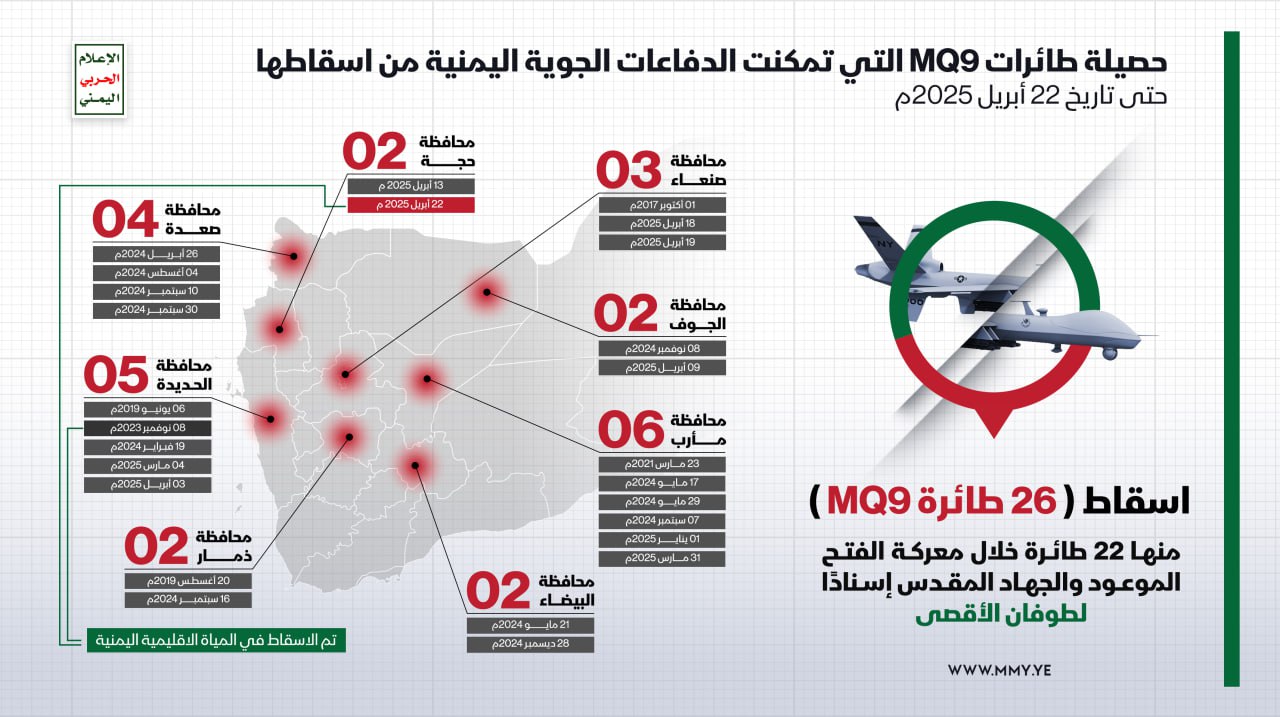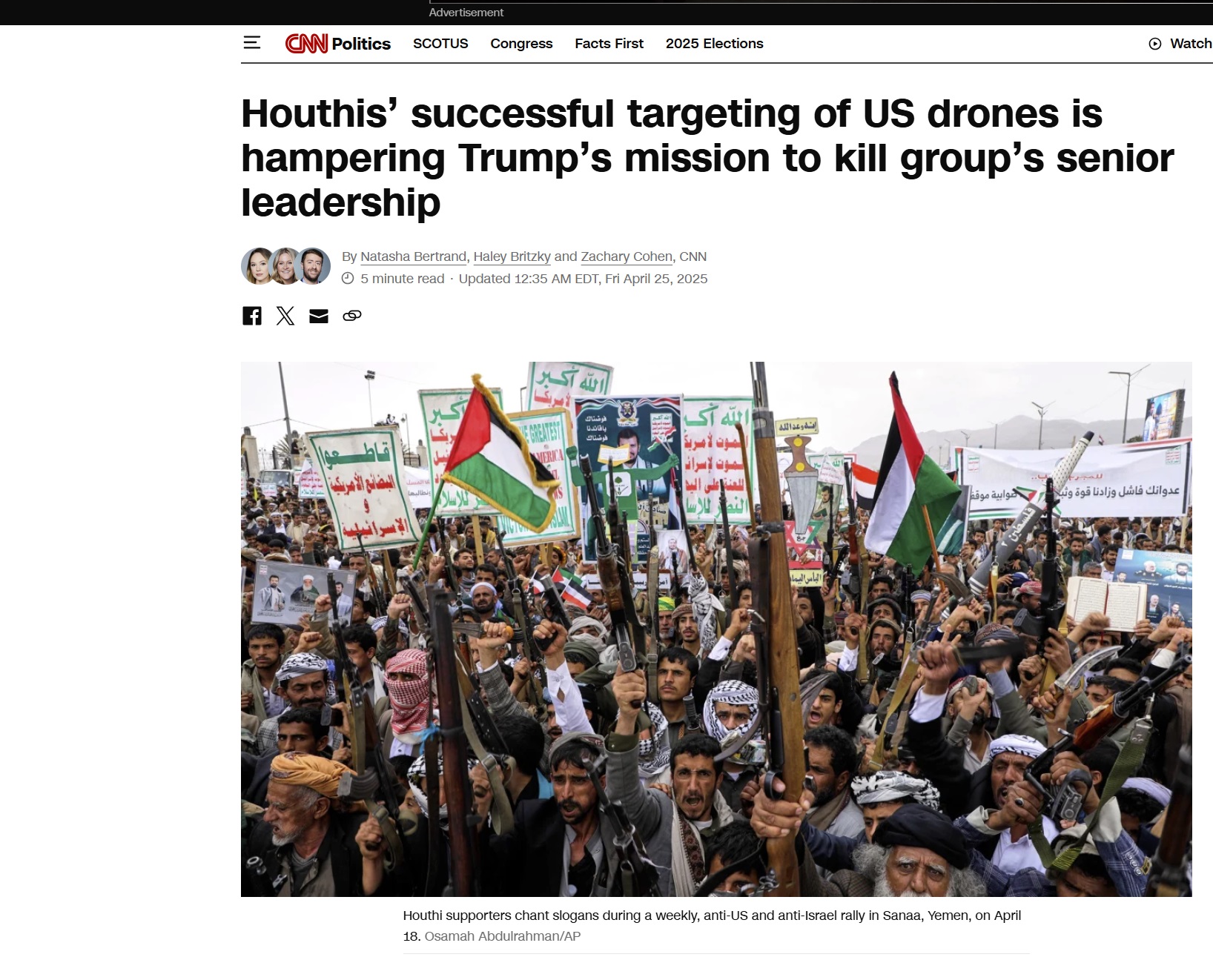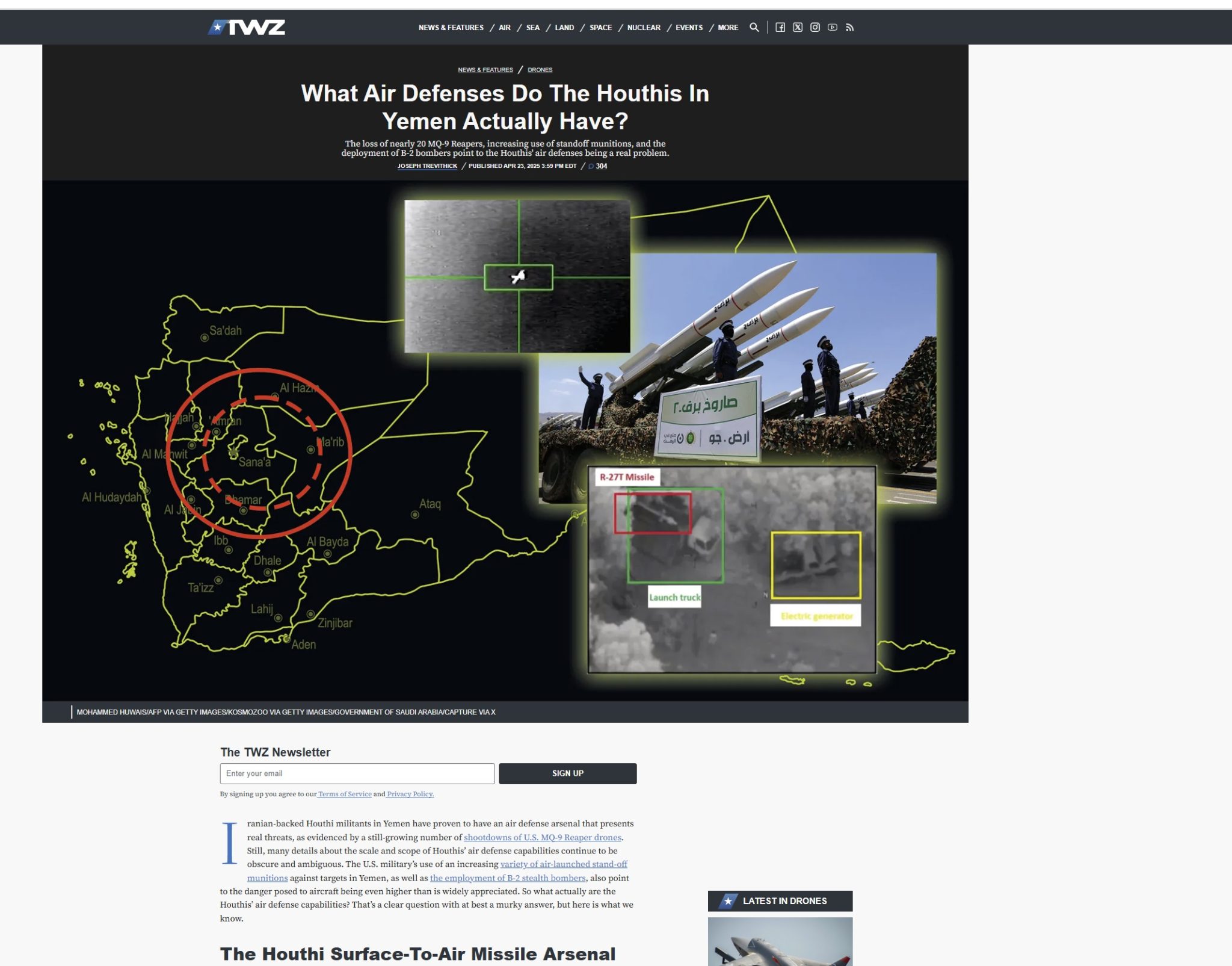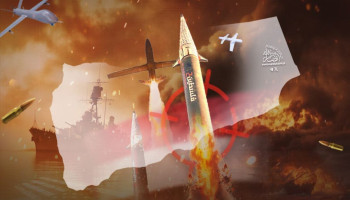It is no minor event when seven modern, highly advanced American drones — among the most sophisticated not only in the United States but globally — are shot down over Yemen's skies. Even more striking is that such downings have become almost routine. Within a single month, seven drones have been shot down: three within the past week alone. Since the beginning of the Promised Victory Battle, 22 drones have been downed, bringing the total to 26, including four shot down before the al-Aqsa Flood campaign, as part of Yemen's resistance to Saudi-American aggression.
A Timeline of Escalation
Between October 1, 2017, and March 23, 2021, only four American drones were downed over Yemen, spaced out over five years.
Since 2021, drone downings paused until November 8, 2023 — a month after the al-Aqsa Flood — when operations resumed with growing intensity. Since then, the pace of downings has sharply increased, culminating in the downing of three drones within just one week.
[caption id="attachment_792392" align="aligncenter" width="1280"]
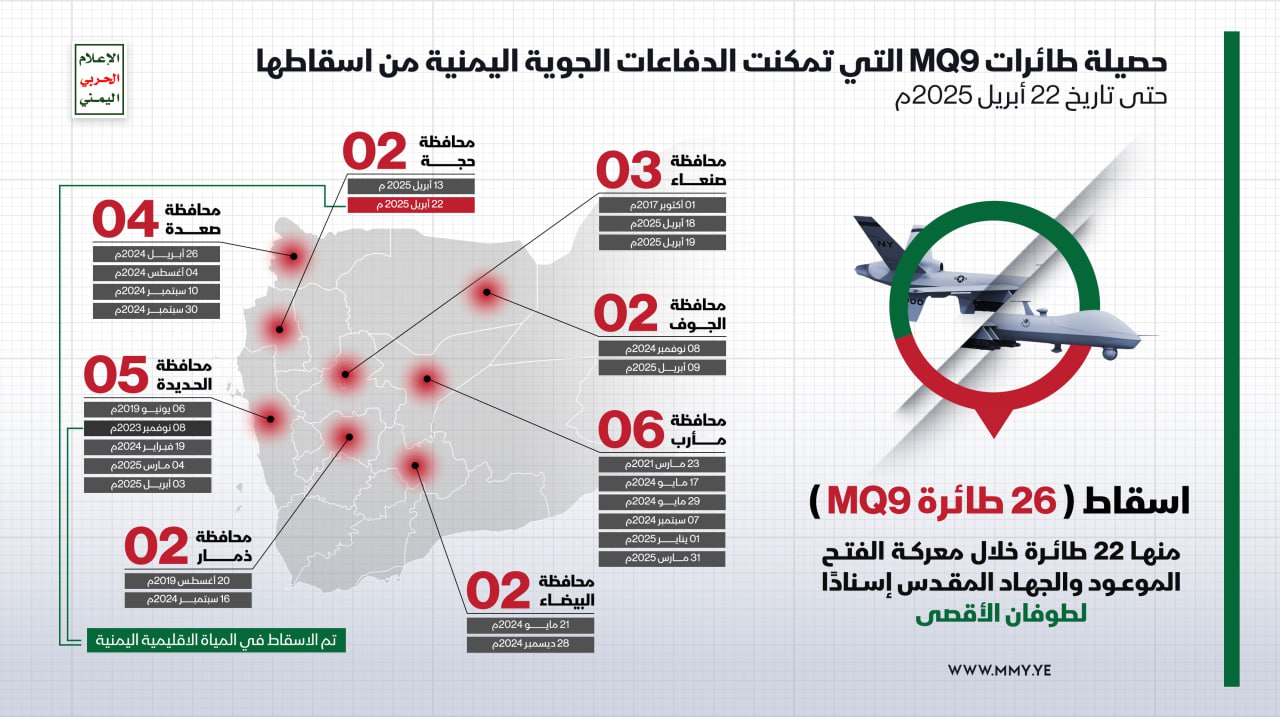 The tally of MQ-9 drones downed by Yemeni air defenses (as of April 22, 2025).[/caption]
The tally of MQ-9 drones downed by Yemeni air defenses (as of April 22, 2025).[/caption]
Intelligence Gathering at a High Cost
The growing number of drone losses has raised questions among observers about the continued deployment of MQ-9 drones in Yemen’s increasingly hostile airspace.
According to a senior U.S. military official, the U.S. Central Command has intensified the use of MQ-9 drones to compensate for critical intelligence gaps needed to continue military operations against Yemen.
Over the past 40 days, U.S. strikes have revealed a lack of high-value targets capable of changing battlefield dynamics, that might halt Yemeni ballistic missile attacks on "Israel", or ensure safe navigation for the Zionist enemy in the Red Sea and Arabian Sea.
Driven by this urgent need, Washington continues to sacrifice large numbers of drones, exposing them to being downed one after another, in desperate attempts to obtain even the smallest bits of information that might help achieve tangible results. This is particularly vital after the U.S. lost many of its intelligence assets on the ground following the dismantling and arrest of several of its spy networks.
With the loss of ground-based assets, the Pentagon sees no better tool than the MQ-9, prized for its endurance, dual surveillance and strike capabilities, and real-time intelligence relay.
Yemen's Advanced Air Defenses
The most significant reason behind the increased downing of drones in Yemen is the development of Yemeni air defenses and their deployment across various provinces. This is evident from the map of drone downings, spanning from Dhamar to Saada, Sanaa, Marib, Al-Jawf, Al-Hudaydah, Al-Bayda, and Hajjah. This advancement has attracted the attention of military research centers and experts in the West, particularly in the United States.
The latest and most focused analysis came from the U.S. military affairs website "The War Zone," which attempted to decipher how Yemeni air defenses operate, consulting several American experts and officials. The findings unanimously concluded, in an unprecedented manner, that Yemeni air defenses now pose a serious threat to U.S. military aircraft. This growing threat explains, according to the site, why U.S. Central Command has resorted to deploying B-2 stealth bombers and increasing operations using long-range munitions against targets in Yemen, to avoid exposing their aircraft to Yemeni air defenses.
Hypotheses on the Operation of Yemeni Defenses
For air defenses to effectively counter advanced American technology, they must possess two main features: accuracy and speed. Accuracy entails detecting, tracking, and pinpointing the target before launching missiles targeting it. Speed involves engaging the target before enemy forces can detect and neutralize radar systems, thwarting interception attempts.
On these two points, "The War Zone" cites multiple officials and experts offering hypotheses about how Yemeni air defenses manage to down one of the most advanced U.S. drones. One hypothesis points to the use of alternative means for detecting and tracking hostile drones, such as passive radio frequency detection. This technique involves tracking the target and launching a missile before activating infrared or radar-guided systems at the final approach phase to strike the target without exposing the launch location.
Explaining this technique further, the report states that by relying on Automatic Dependent Surveillance-Broadcast (ADS-B) systems linked to satellites, along with other passive tracking options, visual radars can detect, decode, and display the precise location, altitude, flight path angle, heading, speed, identity, and call sign of all coalition aircraft within a radius exceeding 250 kilometers. "This information," the report notes, "can be used to devise solutions that prevent air defense batteries from being targeted, allowing Yemeni missiles to operate without the revealing emissions produced by traditional surveillance radars."
Another technique cited is from a briefing by Lieutenant General Jeffrey Kruse, head of the American Defense Intelligence Agency, during a hearing before the American House Intelligence Committee in March. He explicitly confirmed that "Yemeni defenses have attempted to use mobile surface-to-air missile systems against U.S. aircraft."
According to the report, these mobile systems "intensify the threat, as they can appear suddenly, briefly activate their radars, fire, and then move, making them extremely difficult to locate and target, and complicating any attempts to anticipate their possible locations or plan countermeasures."

Loss of Air Superiority
In his speech on the 17th of this month, Sayyid Abdulmalik al-Houthi confirmed that Yemeni air defenses had conducted more than 11 interception and confrontation operations against American aircraft, including stealth planes, successfully thwarting several missions. He also revealed, for the first time, the use of Quds missiles, stating that four separate launches targeted U.S. surveillance and refueling aircraft over the Red Sea, forcing them to withdraw.
These interception operations have resulted in the failure of a significant portion of American attacks, with U.S. forces unable to strike multiple planned targets. In some cases, operations were completely intercepted, while in others, they were partially foiled. The overall situation demonstrates an active and effective defense against American aggression.
This, in turn, signifies a loss of American air superiority. CNN reported, quoting U.S. officials, that Washington had initially hoped to achieve air superiority within 30 days by weakening Yemeni air defenses. However, the high rate of MQ-9 drone downings has rendered U.S. Central Command incapable of achieving that goal, according to the network, and has prevented it from moving to the next planned phase focused on intelligence gathering and leadership targeting.




